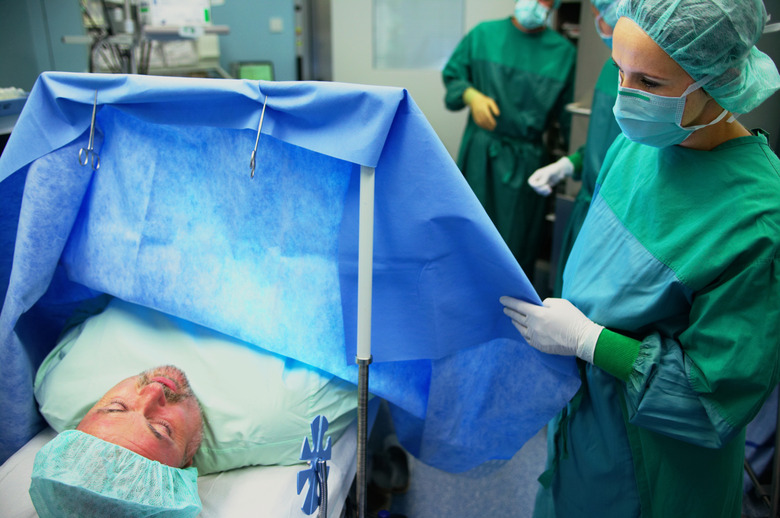Characteristics Of Anaerobic Species
"Anaerobic" means "without oxygen metabolism." Most multicellular organisms have some cells, such as muscle cells, capable of temporary anaerobic metabolism. Other organisms, the facultative anaerobes, can survive temporarily in an anaerobic environment under special circumstances. True, or obligate anaerobic species must remain in an oxygen-free environment in order to survive.
Poisonous Air
Poisonous Air
Obligate anaerobes are defined by two main characteristics: They metabolize without oxygen and oxygen is poisonous to them. Oxygen metabolism is a complicated, multiphase process that generates a series of potentially toxic byproducts, including hydrogen peroxide. Aerobic cells have developed many protective adaptations to break these toxins down into harmless end products. Anaerobic species haven't. In the presence of oxygen, they're soon fatally poisoned by these intracellular toxins.
Healthy Fermentation
Healthy Fermentation
Anaerobic species rely on fermentation metabolism. In aerobic cells, glucose is transformed into the primary cellular fuel, adenosine triphosphate or ATP, with the aid of oxygen molecules. Not so in anaerobic species. In anaerobic cells, glucose metabolism stops at the formation of secondary compounds, or fermentation products — waste products, usually alcohols, that the cells must excrete. Compared to aerobic metabolism, fermentation isn't very efficient — anaerobic cells only produce two molecules of ATP fuel for every one molecule of ingested glucose, while aerobic cells produce 38.
Extreme Specialists
Extreme Specialists
Despite its seeming inefficiency, fermentation metabolism allows anaerobic species to live in some of the most extreme environments on Earth. Each one normally occupies a highly specialized, oxygen-free environment, such as deep ocean water, unexposed soil, or animal intestines. Since their survival and growth depend on the absence of oxygen, they can replicate rapidly when introduced to a stable, oxygen-free environment. Many anaerobic species that are innocuous in their natural habitat become dangerous pathogens when introduced to an unnatural one, such as human tissue.
Anaerobes' Gallery
Anaerobes' Gallery
Anaerobic species include methane-producing archaea — single-celled organisms without nuclei that date back to the origins of life on Earth. Many bacteria are also anaerobic, including the Bacilli group's bacteroides, fusobacterium, clostridium and actinomyces, and the the Cocci group's veillonella and some streptococci. While some normally exist peacefully in soil or animal guts, they thrive in areas of constricted blood and tissue necrosis, where they can produce fatal infections. Anaerobic protozoa include many gastrointestinal parasites and symbiotic gastrointestinal organisms, including ones that allow termites and cattle to digest cellulose. There are even a few anaerobic multicellular animals, members of the phylum Loricifera. First discovered in a deep ocean trench, these minute beings live in ocean sediment, where they conduct their entire lives in the absence of oxygen.
Cite This Article
MLA
Libal, Angela. "Characteristics Of Anaerobic Species" sciencing.com, https://www.sciencing.com/characteristics-of-anaerobic-species-12731880/. 26 February 2014.
APA
Libal, Angela. (2014, February 26). Characteristics Of Anaerobic Species. sciencing.com. Retrieved from https://www.sciencing.com/characteristics-of-anaerobic-species-12731880/
Chicago
Libal, Angela. Characteristics Of Anaerobic Species last modified March 24, 2022. https://www.sciencing.com/characteristics-of-anaerobic-species-12731880/
